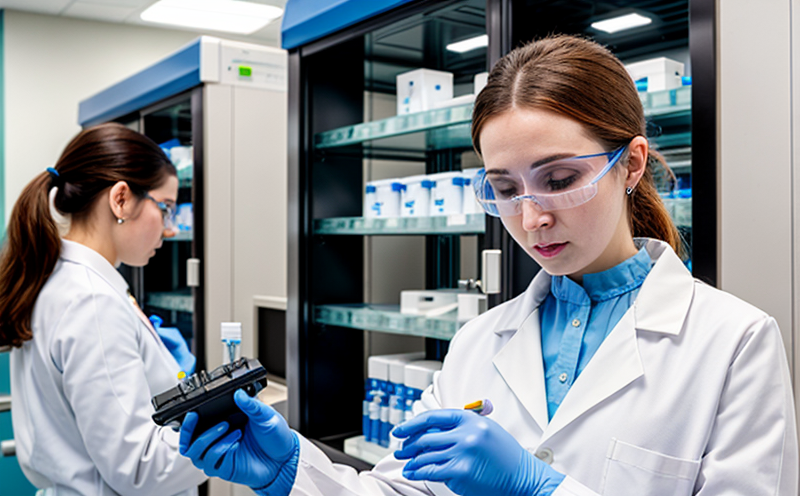Limit of Detection Bioanalysis Testing
The Limit of Detection (LOD) bioanalysis testing is a critical component in ensuring the accuracy and precision of analytical methods used within the pharmaceutical industry. This service plays an essential role in validating that assays can reliably detect the lowest concentration of analytes present in complex matrices, such as biological fluids or formulations.
LOD tests are not only crucial for the development phase but also pivotal during manufacturing, quality control, and regulatory compliance stages. By accurately determining LOD values, pharmaceutical companies ensure that their products meet stringent regulatory standards set by organizations like the FDA, EMA, and WHO.
The process involves several key steps: selecting appropriate samples, preparing them according to specific protocols, running analyses on state-of-the-art equipment, interpreting results based on internationally recognized guidelines (ISO 16149), and validating outcomes through reproducibility studies. These rigorous procedures guarantee high levels of confidence in the analytical methods employed.
For instance, LOD tests are vital when developing new drug candidates where even trace amounts of impurities could affect efficacy or safety profiles. Similarly, during manufacturing processes, ensuring consistent product quality requires accurate measurement down to nanomolar concentrations. Compliance with international standards ensures that all participants in the supply chain adhere to global best practices.
LOD bioanalysis testing goes beyond mere detection; it helps in optimizing assay performance by identifying optimal conditions for minimizing false positives and negatives. This optimization process enhances overall analytical sensitivity, leading to more reliable data interpretation during drug development stages.
In summary, LOD bioanalysis testing is indispensable for maintaining the integrity of pharmaceutical products throughout their lifecycle. It ensures that every batch produced meets exacting quality standards while adhering strictly to regulatory requirements worldwide.
Industry Applications
| Application Area | Specific Use Case |
|---|---|
| Drug Development | Determining the minimum detectable concentration of active pharmaceutical ingredients in early-stage clinical trials. |
| Quality Control | Ensuring consistency and purity of raw materials before incorporation into final formulations. |
| Pharmaceutical Manufacturing | Monitoring production processes to ensure adherence to specified limits for contaminants or excipients. |
| Regulatory Compliance | Meeting stringent requirements set by global regulatory bodies regarding analytical methods used in drug development and manufacturing. |
| R&D Optimization | Identifying optimal assay conditions to enhance detection sensitivity without compromising specificity. |
Quality and Reliability Assurance
The success of LOD bioanalysis testing relies heavily on robust quality assurance measures that ensure consistent performance across multiple batches and sites. Our laboratory adheres strictly to international standards such as ISO 16149, which provide clear guidelines for conducting LOD tests.
Our team employs advanced instrumentation capable of delivering precise measurements down to sub-picomolar levels. Regular calibration checks and method validation studies further reinforce reliability by confirming that each assay remains accurate over time.
In addition to technical proficiency, we emphasize thorough documentation practices to support reproducibility and traceability throughout the entire testing process. This includes detailed records of sample handling procedures, equipment settings, reagent batch numbers, and environmental conditions during experiments.
By incorporating these stringent quality assurance protocols into our workflow, we guarantee that every LOD test conducted meets industry benchmarks for precision and accuracy. Our commitment to excellence ensures that clients receive reliable results they can confidently rely upon when making important decisions about product development or compliance matters.
Customer Impact and Satisfaction
At our core, we strive to deliver exceptional service tailored specifically to the needs of our customers. For quality managers, LOD bioanalysis testing provides peace of mind knowing that their products meet regulatory requirements consistently across batches. Compliance officers benefit from having robust data supporting adherence to international standards.
R&D engineers gain valuable insights into optimizing assay performance early in development cycles, potentially reducing time-to-market and lowering costs associated with late-stage adjustments. Meanwhile, procurement teams appreciate the ability to verify supplier claims regarding raw material purity confidently.
Our approach not only enhances operational efficiency but also fosters long-term partnerships based on trust and mutual respect for scientific excellence. By providing accurate LOD values, we enable customers to make informed decisions that positively impact patient safety and satisfaction.





